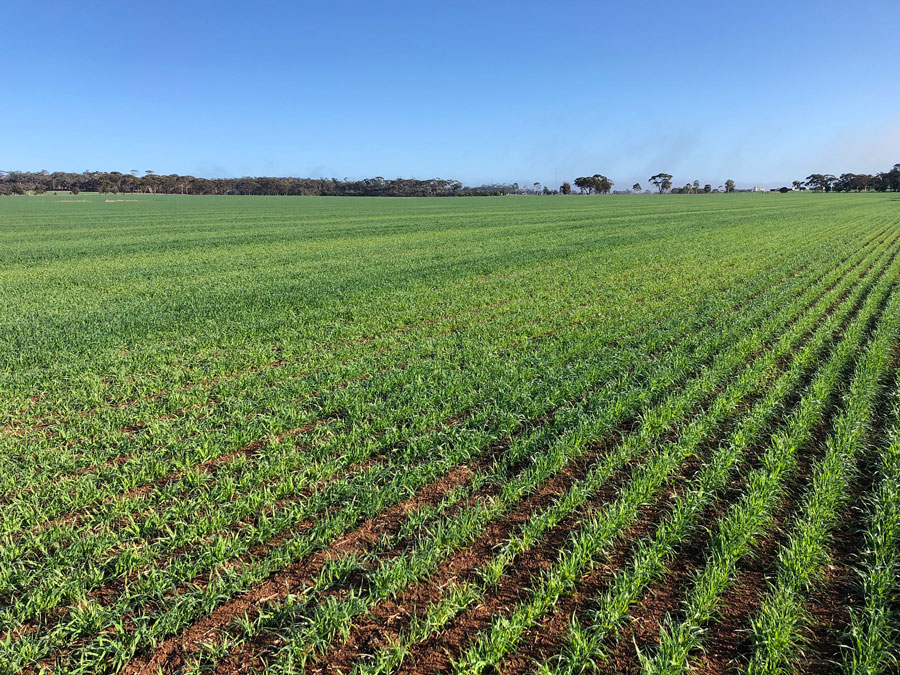A spotlight is being trained on the potassium status of loamy soils in Western Australia, as these soils have flown under the radar for potassium research in recent decades.
“These soils are high-productivity soil types for Western Australia, but they have not had the same attention as the sandy and duplex soils that have been nutrient-depleted more rapidly by cropping practices and, therefore, demanded more-urgent attention,” says Professor Richard Bell, who is working on a GRDC-invested project at Murdoch University that aims to unravel the dynamics of potassium in these soils.
The issue of the depletion of plant available potassium is an emerging problem for loamy soils and Dr Miaomiao Cheng is the postdoctoral fellow tasked with the investigation job.
“These loamy soils have a higher proportion of clay in them, which can retain potassium and make it less accessible to growing plants,” Dr Cheng says.
“Because of this clay content, we have been investigating whether the standard Colwell potassium test is appropriate for these soil types.”
Whether these soils have been used for pasture or cropped using no-till methods with minimal soil disturbance, potassium can tend to be enriched within the top 10 centimetres of the soil profile, where plant matter is decomposing, but quite depleted at depth.
“We are, therefore, particularly interested in the depletion of potassium at depth within these loamy soils; most pertinently this is within the root zone of annual crops,” Dr Cheng says.
The research is part of a larger co-investment in crop nutrition by GRDC involving The University of Western Australia, the Department of Primary Industries and Regional Development, Murdoch University, Curtin University and CSIRO, together with industry partners CSBP and Summit Fertilizers through the SoilsWest alliance.
Soil test and critical potassium level
While soil potassium testing has been developed and used for sandy and sandy duplex soils in WA, there are questions about whether the current soil potassium testing guidelines are suitable for the heavier-textured loam and clay soil types in WA.
“We have undertaken a study to compare the predictive performance of different soil potassium testing methods for plant-available potassium on a range of soil types of WA,” Dr Cheng says.
“Soil pH, cation exchange capacity, exchangeable sodium levels and clay content can all affect the accuracy of various soil potassium tests.”
The initial results from a pot experiment showed that Colwell potassium, the industry standard, was not the best predictor of potassium uptake for these loamy soils. The tetraphenylborate extractable potassium test was the best predictor of potassium uptake by wheat for all soils, while the ammonium acetate potassium test was the best predictor where potassium levels were less than 300 milligrams/kilogram.
“The next step of this work is to run field experiments on loamy soils and compare yield response to potassium fertiliser as predicted by different potassium soil test methods, which is in progress. We have set up four field experiments on loamy soils this year to address this.
“Additionally, we need to determine the critical level of potassium in loamy soils. This is the level of potassium concentration above which we are reasonably confident the crop is amply supplied with this nutrient.
“Due to the illite clay content of some of these soils, which can fix potassium, we may need to review the critical level of potassium for fertiliser recommendations.”
Soil sample depth, soil cation exchange capacity, yield potential, soil water content, presence of other cations and crop species all affect the critical soil test range.
“At present, the Colwell potassium test is still useful for loamy soils, but in the longer term, we may be able to produce a refinement of the test with critical values suited to loamy soils, or propose an alternative test,” Professor Bell says.
Testing and addressing deficiency
Testing for potassium is best undertaken by a soil test pre-planting, or by a plant tissue test using whole plant tops in-season, which can then be taken into consideration for the following season if it is too late for a potassium application in the current season. Potassium application at seeding or up to four weeks after will optimise the benefits of application.
Grain potassium content is not a reliable indicator of paddock potassium status, but it can be used to estimate crop potassium removal.

Figure 1: A York gum loam near Brookton showing windrow effects relating to potassium supply. Source: James Easton, senior agronomist, CSBP
Table 1: Colwell potassium (mg/kg) levels at depth from the off-row regions from the York gum loam site near Brookton.
OFF-row (cm) | Colwell Potassium (mg/kg) |
|---|---|
0-10 | 40 |
10-20 | 22 |
20-30 | 21 |
30-40 | 21 |
40-50 | 20 |
Source: CSBP
Not only should the available amount of potassium in the soil be replenished but potassium lost by product removal should be replaced. Requirements for each crop differ and the requirements for hay are particularly high, which must be accounted for when budgeting potassium rates for the coming season.
The project investigated five sites where windrowing effects were observed on loamy soils in 2019 and 2020. At three of these sites, better crop growth on the windrow compared to off the windrow could be explained by the accumulation of potassium where the crop residue had been placed (Figure 1 and Table 1).
In 2021, the response to applied potassium is being examined at four sites on loamy soils in the Avon Valley. This research will continue into 2022 to determine appropriate soil test potassium levels for loamy soils and economic rates of potassium fertiliser.
More information: Richard Bell, 0405 131 429, r.bell@murdoch.edu.au; SoilsWest

























































